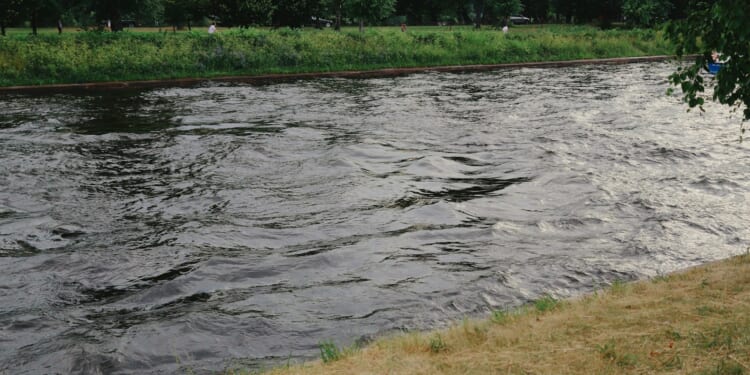Bertie Ballinger is a Worcester-born Conservative candidate, environmentalist, and charity fundraiser with a passion for local community action.
In the race for net zero by 2025, Britain is at a crossroads.
With energy prices fluctuating, global fuel supply chain under pressure and geopolitical tension rising, the UK must find secure, reliable, and home-grown solutions to its energy needs. Small-scale hydroelectric power stations offer just that, providing clean, local energy where it is most needed.
It is time for the Conservative Party to take back the initiative on climate and energy policy by championing a technology so deeply rooted in our history and ripe for future potential. The Conservative party, and Kemi Badenoch especially, should use the party’s policy revival to put forward a case for local power, for local people. Seize the opportunity of forced unitary and devolution.
When the then Prime Minster, Rishi Sunak, created the Department for Energy Security and Net Zero in 2023, it signalled a major shift in the approach to climate change. This wasn’t just environmentalism for the sake of virtue signalling, it was a move grounded in nation interest: strengthening our energy security, protecting consumers and driving long term economic growth through emerging industries. Framing net zero as a matter of energy sovereignty allows the government to lead the debate and offer practical, patriotic solutions to one of the greatest challenges of our time.
The solution I see, is hydroelectric power.
Britain is crisscrossed by rivers, most of which have been engineered with weirs, sluices and mills, many dating back centuries. These structures present a unique opportunity to revive a lost tradition. In 1894, Worcester became home to the world’s first municipal hydroelectric plant, powering 7 per cent of the city’s needs until it closed in 1976. That legacy can now be revived, not through massive megastructures like nuclear power, but through small, discreet and community driven hydro schemes.
Unlike offshore wind, nuclear or solar farms, small scale hydro does not require enormous upgrades to the national grid, or the destruction of UK farmland. These stations generate energy right where its needed, serving local homes, businesses, and public buildings, reducing the need for long distance transmission, and improving the resilience of local communities. The technology is simple, scalable, and safe. Archimedes screws, the most common system today for small hydropower, allows water to turn the giant screws in a way that is gentle on fish, safe from debris, and effective in producing constant, predictable power.
The journey to net zero opens the door for new domestic industries, many of which will demand skilled workers, manufacturing hubs, research and development and innovation. These industries will spring up where they are needed, across the country, not just focused on London or areas of other mega projects. This is a golden opportunity for Britain to invest in future facing sectors, creating thousands of jobs and boosting our universities, technical colleges and the whole manufacturing and tech economy.
Hydropower is particularly attractive from an economic and strategic point of view. 77 per cent of the cost of developing and constructing small hydro projects stays within the UK. That is significantly more than solar (62 per cent), or onshore wind (48 per cent). In practical terms, this means more British firms employed, more British supply chains activated and stimulated, and more British taxpayers seeing a return on their investment. The development of just 1 gigawatt (GW) worth of hydro power, would inject £1.7 billion into our economy and create over 21,000 jobs.
Crucially, these benefits are not simply theoretical but are already being realised in places like Pershore.
The Pershore Hydro project, a small-scale scheme on the River Avon in Worcestershire, demonstrates the immense value that local hydro can bring. Built at a cost of £1.5m in 2014, this facility now generates approximately 1,000 (MWh) of electricity per year, enough to power hundreds of homes, and brings in around £400,000 in revenue annually. That’s a return on investment of just under four years. After that, it continues to generate income and clean energy for decades, with minimal maintenance. But importantly that maintenance is using local British companies.
What makes Pershore Hydro so important and unique is its use of Archimedes screw technology that allows fish and debris to pass safely through, while allowing a slower, calmer river flow below, benefitting the local environment. Its design is scalable, meaning additional screws can be added depending on the flow rates and energy needs. The project shows how Britain can turn its existing weirs into modern energy assets, with minimal disruption to wildlife or surrounding area.
The implications of the Pershore model are huge.
If the UK were to develop 1000 similar schemes using existing weirs across the country it could generate that 1 GW of clean energy I spoke about earlier. scaled up versions of the Pershore model could be successful in small towns, villages but importantly, cities like Worcester. With its taller, and longer weir, a hydroelectric scheme in Worcester could generate £1.2m in annual revenue, as a cost of between £6-£7m. In the current political climate surrounding net zero, hydro offers local councils a funnel for capital investment, with a generous ROI, allowing them to meet their own net zero targets and residents’ energy needs.
We must seize this opportunity.
This is not a time to shy away from environmental goals, but to reframe them in terms that connect with the electorate: security, independence, patriotism and prosperity.
Hydropower is not about trendy slogans or costly mega projects; it is about practical energy policy that strengthens Britain and its local communities. With our rivers flowing all year round and our engineering expertise already in place, we can take what was once a Victorian innovation and make it a cornerstone of Britain clean energy future.


![Scott Bessent Explains The Big Picture Everyone is Missing During the Shutdown [WATCH]](https://www.right2024.com/wp-content/uploads/2025/11/Scott-Bessent-Explains-The-Big-Picture-Everyone-is-Missing-During-350x250.jpg)













